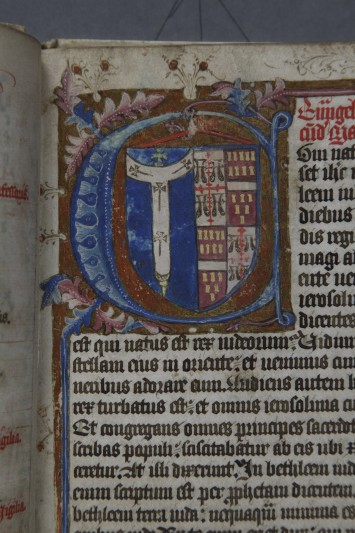Bourchier was Archbishop of Canterbury for 32 years, during the tumultuous period of the Wars of the Roses: he crowned Edward IV, Richard III and Henry VII. His activities within the diocese of Canterbury, however, are less well documented. The official record of this Archbishop’s administration is held by Lambeth Palace Library, as part of its long series of archiepiscopal registers from 1279 onwards. F.R.H. du Boulay, in his published edition (1957) of Bourchier’s register, notes that it contains no visitation returns and is in some other ways less complete than one might have expected, perhaps suggesting physical loss or that some information was never formally written up. This may not be wholly surprising, given the disruptive events that were taking place at the same time.
The volume which has now been acquired may help to fill some of the gaps in our knowledge of the more local aspects of Bourchier’s tenure of the see of Canterbury and thereafter. It comprises a miscellany of material deriving from the Archbishop’s registry in Canterbury and divides into two separate periods, in the fifteenth century and in the second half of the sixteenth. Much of this is concerned with lists of churches and chapels in the diocese of Canterbury (presumably for the purpose of visitations), lists of religious houses and hospitals, lists of benefices, each with their value, information about tithes and copies of various legal agreements. It appears to have been compiled by officials with a detailed knowledge of the finances of both the cathedral and the diocese and contains the signatures of some known Canterbury officials of the late sixteenth and early seventeenth century, though its provenance, authorship and exact function are still to be fully explored.
The manuscript is decorated with a large illuminated initial enclosing Archbishop Bourchier’s arms, depicting the water-bouget (a leather bucket on a pole for carrying water), a pun on his family name. The annotations include some drawings of monks’ heads, the post-Reformation deletion of Thomas Becket’s name from the calendar and numerous later signatures of individuals probably associated with Canterbury cathedral. The relationship of this memorandum book to other records at Lambeth and Canterbury certainly merits further investigation, but it is interesting that it already contains a long note, added in an eighteenth-century hand, ‘written from an old writing at Lamb-hithe in ArchB Sancrofts time’. Lambeth Palace Library tried and failed to buy this manuscript at auction some 35 years ago, so we are particularly grateful to the Friends of the National Libraries that it can now be made available for research.
